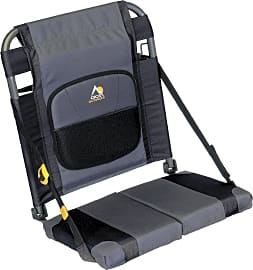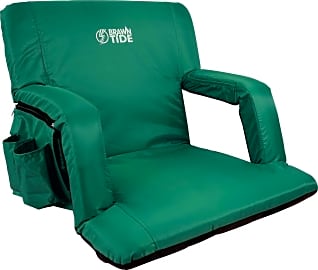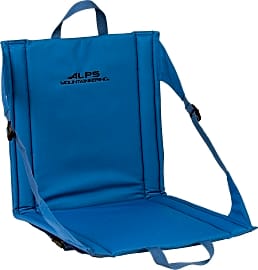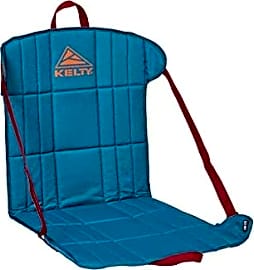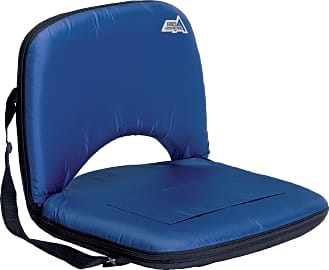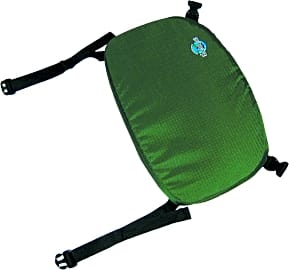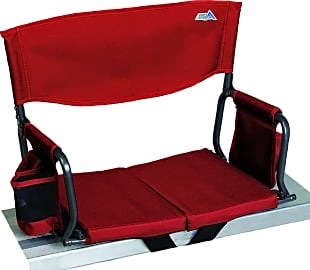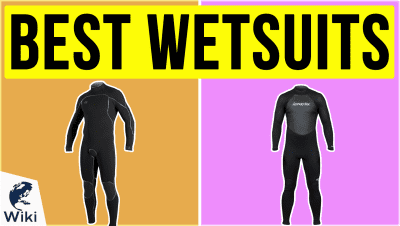The 9 Best Canoe Seats

This wiki has been updated 34 times since it was first published in October of 2016. There's nothing more tranquil and relaxing than a day fishing on the water or a nice, long trip paddling down the river -- unless your canoe seats are hard and painful (or you start to hear ominous banjo music; but that's a whole other issue). The models on this list can be used on top of your existing seat, helping to keep you comfy and content, no matter how long you stay out on the water. When users buy our independently chosen editorial recommendations, we may earn commissions to help fund the Wiki.
Editor's Notes
February 23, 2021:
Canoes are a fun way to spend the day on the water, however they aren't known for their comfort. Luckily, these portable chairs can help solve that problem, as they add either cushioning, back support, or both to those hard benches that are probably in your vessel.
When choosing a seat, you'll need to decide what you value more, comfort or portability, as there will inevitably be a trade off between these two things. For example, consider the large and thickly padded Brawntide Extra Wide. This one will obviously be very comfortable no matter how long you are going to be sitting in it, and it offers plenty of room, but at eight pounds it is close to three times what other models weigh, if not more, and it doesn't exactly fold up very compactly either.
On the other side of the spectrum you have models like the Kelty Camp and Crazy Creek Pad. Neither of these offers a lot of cushioning, and the latter doesn't even have back support, but they will take up very little room when not in use, and you'll probably barely notice you are carrying them along with the rest of your gear.
We feel options like the GCI Outdoor BleacherBack, Mountaineering Explorer +XT, and GCI Outdoor SitBacker offer the best balance of comfort and portability, as they aren't very heavy, yet offer more than adequate padding and a good amount of back support. The BleacherBack even has pockets for a drink, valuables, and whatever other small items you want to keep on hand.
September 10, 2019:
Spending the day paddling can be a serene experience. Of course, if you can't get comfortable the whole time, it may not wind up being all that enjoyable. Luckily, these handy canoe seats, most of which double as stadium seats, can ensure that doesn't happen to you.
For those who care more about comfort than anything else, we have included the Brawntide Wide, Mountaineering Explorer +XT, and Soft Touch Stadium. All of these have extremely thick padding and high backs that provide a good amount of support. As one might expect from something with so much cushioning, these models can be a bit bulky when carrying and don't store that compactly, especially the Brawntide Wide and Soft Touch Stadium. Both of these do, however, feature dual straps for backpack-style carrying to make things a little bit easier.
The GCI Outdoor SitBacker claimed our top spot because we feel it offers the best balance of portability and comfort. It weighs just three pounds, yet has a thick bottom pad and added lumbar support.
If you already feel a bit overloaded with gear, you may prefer to opt from something that is extremely compact and thin when folded up, like the Alps Mountaineering Weekender, Crazy Creek Hex 2.0, and Rio Gear Arm Chair. These first two both weigh less than a pound and a half, too, so you'll barely be adding any weight to your cargo.
Special Honors
Pakboats Bench Type Canoe Seat If you want to preserve the classic aesthetic of your canoe, while making it more comfortable, the Pakboats Bench Type is a good choice. It features a sturdy wooden frame that makes it capable of supporting a lot of weight, and a woven polyester webbing that allows it to conform to your body. pakboats.com
A Brief History Of Canoes
The Dutch weren't the only ones carving out boats, however.
Canoes might be the oldest form of boat known to man. Excavations in the Netherlands revealed the Pesse canoe, which is believed to date back to 8040 B.C.E. It was a dugout canoe that was made of a single, large piece of pine, chopped down with flint tools.
The Dutch weren't the only ones carving out boats, however. Canoes were also found in the Amazon, as well as in Australia, where the Aboriginal people used a variety of woods to make them.
These small, lightweight boats were capable of carrying a surprising amount of cargo, and while they weren't especially durable, it was easy to patch them up when the need arose. The designs slowly became more elaborate, as well, with many tribes using whale bones to make sturdier frames, and stretching animal skins across the boat to make them more waterproof.
When European settlers ventured into the Americas in the 17th century C.E., they immediately recognized the value of these watercraft, especially as they tried to explore and map the new continents. North American adventurers used them extensively, as the land was full of smaller creeks and rivers that weren't suitable for larger boats.
The first European to cross all of North America, Sir Alexander Mackenzie, relied on canoes and kayaks for large portions of his voyage, and once the fur trade took off, trappers used them to commute to and from trading outposts.
In the 1800s, people began to use them for fun and recreation, and clubs formed around their use. The Royal Canoe Club was founded in London in 1866, with its Yankee counterpart, the American Canoe Association, coming along 14 years later.
As you might expect whenever a bunch of like-minded people get together, friendly competitions started to develop, and soon people began to race their canoes. Canoeing was a demonstration sport at the 1924 Olympics in Paris, and made its debut as a full-time sport in Berlin 12 years later (although it was overshadowed by other goings-on).
Millions of people still canoe every year, both for fun and for sport, and it's remarkable how little the design of the boats has changed since the Mesolithic Era. One thing that hasn't changed, however, is how remarkably easy it is to fall out of one of the things.
Finding The Right Canoe Seat
It's remarkable how many people neglect to consider their canoe seat when shopping for a new boat (which, presumably, is why you're here today).
If you're planning on spending a lot of time in your canoe, you'll want to make sure your seat is comfy. You expect to have sore shoulders when you're done paddling, but there's no reason why you should come home with an aching back.
You expect to have sore shoulders when you're done paddling, but there's no reason why you should come home with an aching back.
If you already have back problems, you should find a seat that offers plenty of lumbar support. Many options don't have a backrest at all, so unless your posture is perfect, you should skip those entirely.
Find one that stays in place, as well. If you can't secure it in some way, it'll slide around all over the place, especially once it gets wet. There are many with straps, while others snap-in over the top of the boat.
Another thing that you shouldn't overlook is the possibility of storage space. There are some with mesh pockets, which can come in handy when you're out on the lake. It's an easy and secure way to keep your phone, keys, and anything else you don't want to lose in one place, although you can replicate these benefits with a dry bag.
Once you find a seat that works, you'll be able to stay out on the water as long as you like without needing a chiropractor the next day (you can still get a massage — just tell your boss we said you could take a personal day).
Tips For Safe Paddling
While canoeing is lots of fun, it's not without its risks. Dozens of people die while paddling each year, so don't let your guard down while you're out on the water.
Take every precaution you can before you launch your boat. That means wearing a life vest, even if you're a strong swimmer, and carrying a survival whistle or flare gun in case you need help.
Be sure not to take any risks by leaning over, as it's easier than you think to flip the canoe.
Don't overestimate your abilities, either. Take some classes before you start, and respect the rapids. Check the weather report before you leave, and if it looks like there's a storm coming, stay home. It's not just rain you have to worry about — the lightning that accompanies it is what will probably get you.
Be sure not to take any risks by leaning over, as it's easier than you think to flip the canoe. If you're going out in the ocean, or during colder months, remember that hypothermia from being in the water is a much bigger danger than drowning.
To minimize the risk, you can wear a wetsuit under your clothes, and keep a blanket, chemical hot pack, and means to start a fire in a waterproof bag. Get out of the water as soon as possible, and find a way to warm yourself — but don't do it too quickly, or else you could trigger a heart arrhythmia.
It's probably a good idea to take some basic first aid classes while you're at it, since there's a seemingly endless number of ways to hurt yourself out in the wild. Also, make sure you tell a friend where you're going, and what time you expect to be back, and have them call the authorities if you don't show up on time.
There's no reason why you can't come back safe and sound from every adventure, provided you take these simple precautions. Most importantly, though, if you're in a rural area and hear banjo music, paddle for your life.



